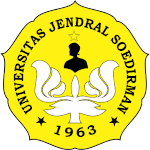ANALISIS KOMUNIKASI PERSUASIF PEONY ECOHOUSE DALAM MENINGKATKAN KESADARAN LINGKUNGAN MELALUI PENDEKATAN TEORI GOALS-PLANS-ACTION
Abstract
Environmental awareness has become a hot topic in recent years around the world. One of them is Indonesia. This awareness is present due to the many disasters that come from human error response to the environment and its changes. Today's environmental problems are widely discussed, because it has been seen that there is environmental pollution caused by human actions. Peony Ecohouse as one of the first eco-friendly grocery stores in the Special Region of Yogyakarta has contributed to increasing environmental awareness through persuasive communication. The purpose of this research is to analyze the persuasive communication of Peony Ecohouse in increasing environmental awareness through the Goals-Plans-Action Theory approach. This research uses the Goals-Plans-Action message production theory which was proposed by James Prince Dilliard with qualitative description research methods and collects data by in-depth interviews, observations, and documentation studies. The data was then analyzed through three stages, namely data reduction, data presentation, and drawing conclusions. Then the data is validated through triangulation of sources. The results of this research show that the Peony Ecohouse has generated a message to raise environmental awareness. The steps taken are through goal setting, planning, and action. Peony Ecohouse has gone through this step well, but there are still things that need to be addressed as suggestions to further increase environmental awareness.
References
Banyaknya Desa/Kelurahan Menurut Keberadaan Sarana Perdagangan. (2018). Badan Pusat Statistik. https://www.bps.go.id/indicator/168/943/1/banyaknya-desa-kelurahan-menurut-keberadaan-sarana-perdagangan.html
Braithwaite, D. O., & Schrodt, P. (2015). Engaging Theories in Interpersonal Communication. In Engaging Theories in Interpersonal Communication (2nd ed.). Sage. https://doi.org/10.4324/9781003195511
Creswell, J. W. (2010). Research design: pendekatan kualitatif, kuantitatif, dan mixed. Pustaka Pelajar.
Darmawan, B., Saam, Z., & Zulkarnaini. (2010). Hubungan Pengetahuan, Sikap, Perilaku, dan Peranserta dengan Kesadaran Lingkungan Hidup serta Kesanggupan Membayar Masyarakat Sekitar Bantaran Sungai di Kota Pekanbaru. Jornal Of Environtmental Science, 4, 103–116. https://doi.org/http://dx.doi.org/10.31258/jil.4.02.p.103-116
Handayani, S. (2014). Implementasi Model Cooperative Learning Teknik Talking Chips Dengan Standar Kompetensi “Memahami Usaha Manusia Mengenali Perkembangan Lingkungannya” Untuk Meningkatkan Kepedulian Lingkungan Dan Prestasi Belajar IPS Siswa Kelas VIIA SMP Negeri 1 Mondokan S. Paper Knowledge . Toward a Media History of Documents, 44–58. https://doi.org/https://doi.org/10.20961/historika.v17i2.29294
Hasani, J. (2021). Komunikasi Persuasif Dalam Al-Quran (1st ed.). Pustaka Ilmu.
Hendri, E. (2019). Komunikasi Persuasif: Pendekatan dan Strategi. Remaja Rosdakarya.
Hutagalung, I. (2015). Teori-Teori Komunikasi Dalam Pengaruh Psikologi (1st ed.). Indeks.
Koes, A. (2019). TPST Piyungan Kembali Ditutup Warga. Gatra.Com, https://www.gatra.com/detail/news/403298-TPS-Piyun.
Milfont, T. T., Duckitt, J., & Cameron, L. D. (2006). A Cross-Cultural Study of Environmental Motive Concerns and Their Implications for Proenvironmental Behavior. Environment and Behavior, 38(6), 745–767. https://doi.org/10.1177/0013916505285933
Moleong, L. J. (2018). Metodologi Penelitian Kualitatif. Remaja Rosdakarya.
Muhid, H. K. (2021). Satu Orang Indonesia Hasilkan 0,68 Kilogram Sampah Per Hari, Juga Sampah Plastik. Tempo.Co. https://tekno.tempo.co/read/1460843/satu-orang-indonesia-hasilkan-068-kilogram-sampah-per-hari-juga-sampah-plastik/full&view=ok
Mulyana, D. (2007). Ilmu komunikasi: Suatu Pengantar. Remaja Rosdakarya.
Neoloka, A. (2007). Kesadaran Lingkungan. Rieneka Putra.
Nugroho, I. (2019). Bantargebang Menunggu Tumbang. News.Detik.Com, https://news.detik.com/x/detail/investigasi/201911. news.detik.com/x/detail/investigasi/20191120/Bantargebang-Menunggu-Tumbang/
Nurboko, C., & Achmadi, A. (2009). Metodologi Penelitian. Bumi Aksara.
Patton, M. Q. (2006). Metode Evaluasi Kualitatif. Pustaka Pelajar.
Rizkia, S. A. (2021). Peony Eco House: Toko Curah yang Mengampanyekan Gerakan Mengurangi Sampah Plastik. Wiradesa.Co. https://www.wiradesa.co/peony-eco-house-toko-curah-yang-mengampanyekan-gerakan-mengurangi-sampah-plastik/
Saputro, D., Rintayani, P., & Supeni, S. (2016). Hubungan Pengetahuan Lingkungan Hidup, Tingkat Sosial Ekonomi, Dan Tingkat Pendidikan Terhadap Sikap Peduli Lingkungan. Geo Eco, 2, 128–136.
Septarini, D. F., & Manuhutu, F. Y. (2019). Pelatihan dan pendampingan pengelolaan keuangan usaha toko kelontong di kampung kuprik kabupaten merauke 1). Musamus Devotion Journal, 1(1), 30–39. http://www.ejournal.unmus.ac.id/index.php/devotion/article/view/1482
Soyomukti, N. (2012). Pengantar Ilmu Komunikasi (2nd ed.). Ar-Ruzz Media.
Sugiyono. (2010). Metode Penelitian Pendidikan Pendekatan Kuantitatif, kualitatif, dan R&D. Alfabeta.
Sukirno, S. (2008). Mikro Ekonomi: Teori Pengantar (3rd ed.). Raja Grafindo Persada.
Widjaja, H. A. W. (2002). Komunikasi (Komunikasi dan Hubungan Masyarakat). Bumi Aksara

This work is licensed under a Creative Commons Attribution-ShareAlike 4.0 International License.
Authors who publish with this journal agree to the following terms:
- Authors retain copyright and grant the journal right of first publication with the work simultaneously licensed under a Creative Commons Attribution License that allows others to share the work with an acknowledgment of the work's authorship and initial publication in this journal.
- Authors are able to enter into separate, additional contractual arrangements for the non-exclusive distribution of the journal's published version of the work (e.g., post it to an institutional repository or publish it in a book), with an acknowledgment of its initial publication in this journal.
- Authors are permitted and encouraged to post their work online (e.g., in institutional repositories or on their website) prior to and during the submission process, as it can lead to productive exchanges, as well as earlier and greater citation of published work (See The Effect of Open Access).














